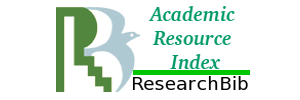Abstract
Teachers who do not strictly enforce classroom rules are likely to blame for the majority of disturbances that occur in schools. This research seeks to investigate the association between effective classroom management strategies and the disciplinary measures taken by primary school children. The study polled over six hundred and twenty-two Antalya educators. The statistical significance of the regression coefficient was determined using an analysis. Teachers' administrative abilities were significantly associated with the extent to which their students followed school policy. The results showed a positive correlation between teachers' first, second, third, fourth, and sixth classroom management dimensions and students' total disciplinary behaviour, while the fifth dimension showed an adverse correlation. According to research, there is a strong correlation between certain teacher qualities pertaining to classroom management and students' capacity to behave disciplined in class.
References
- Ravi SS. Impact of Privatisation of Education in Indian Society. Journal of Culture, Society and Development. 2015;6: 22-26.
- Cunningham JE, Chow JC, Meeker KA, Taylor A, Hemmeter ML, Kaiser AP. A conceptual model for a blended intervention approach to support early language and social-emotional development in toddler classrooms. Infants & Young Children. 2023 Jan 1;36(1):53-73. https://doi.org/10.1097/IYC.0000000000000232
- Kaya M, Selvitopu A. A Meta-Analysis of the Effects of Some Factors on Teachers' Classroom Management Skills. International Journal of Contemporary Educational Research. 2019 Dec;6(2):409-25. https://doi.org/10.33200/ijcer.621313
- Marder J, Thiel F, Goellner R. Classroom management and students' mathematics achievement: The role of students’ disruptive behavior and teacher classroom management. Learning and Instruction. 2023 Aug 1;86:101746. https://doi.org/10.1016/j.learninstruc.2023.101746
- Korest R, Carlson JS. A meta-analysis of the current state of evidence of the Incredible Years Teacher-Classroom Management program. Children. 2021 Dec 30;9(1):24. https://doi.org/10.3390/children9010024
- Egeberg H, McConney A, Price A. Teachers’ views on effective classroom management: A mixed-methods investigation in Western Australian high schools. Educational Research for Policy and Practice. 2021 Jun;20(2):107-24. https://doi.org/10.1007/s10671-020-09270-w
- Sprick J, Sprick R, Edwards J, Coughlin C. CHAMPS: A Proactive & Positive Approach to Classroom Management. Safe & Civil Schools. Ancora Publishing. 21 West 6th Avenue, Eugene, OR 97401; 2021.















